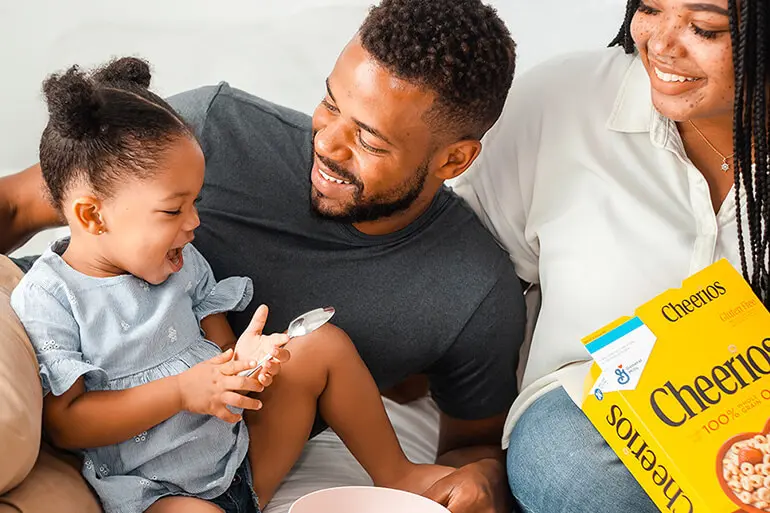
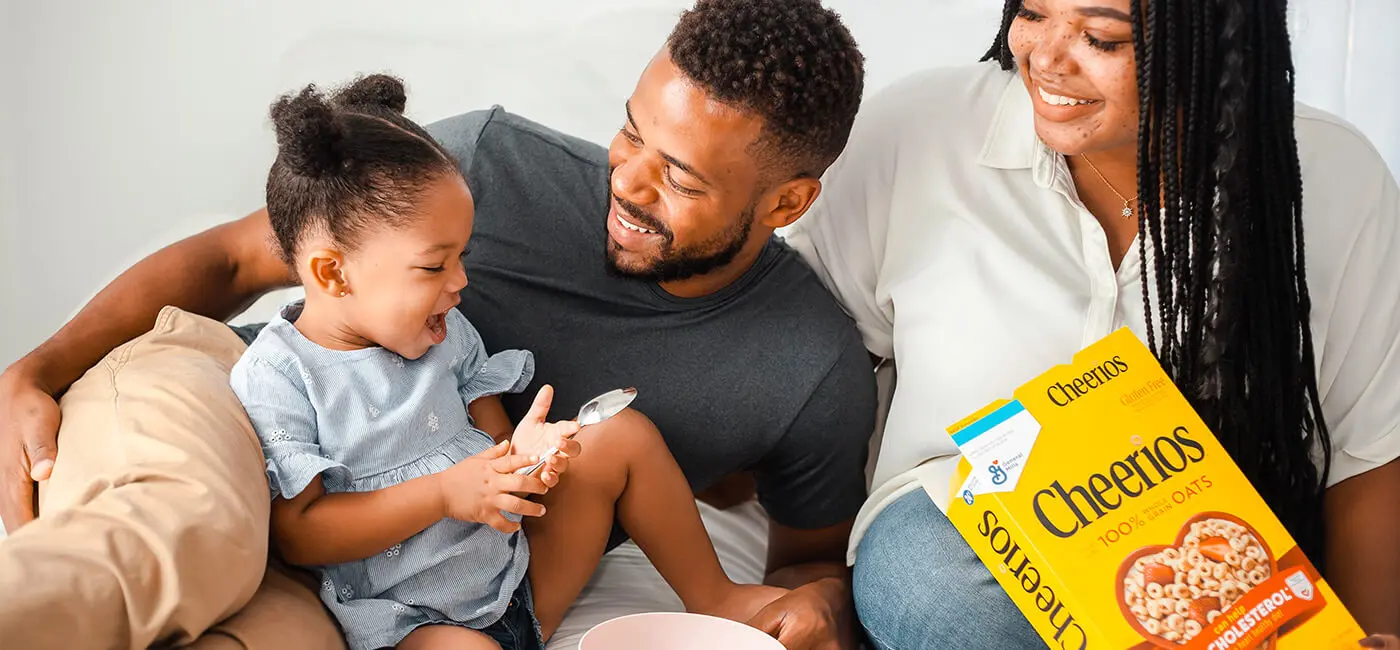
First Finger Foods
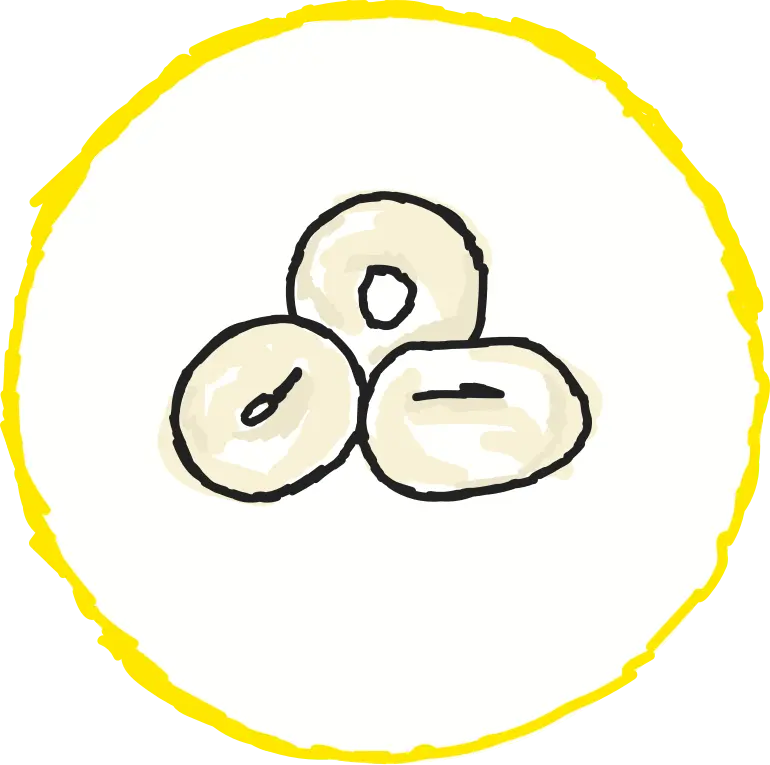
Why Cheerios?
Cheerios are made for little fingers to help with development of fine motor skills, encourage self-feeding independence and learning the pincer grip technique. The unique O shape of Cheerios may reduce the risk of choking and it dissolves easily in the mouth. Considered a favorite first finger food by moms, ensure your child has a nutritious start every day with 100% Whole Grain oats, 2 grams of fiber and no artificial colors or flavors.
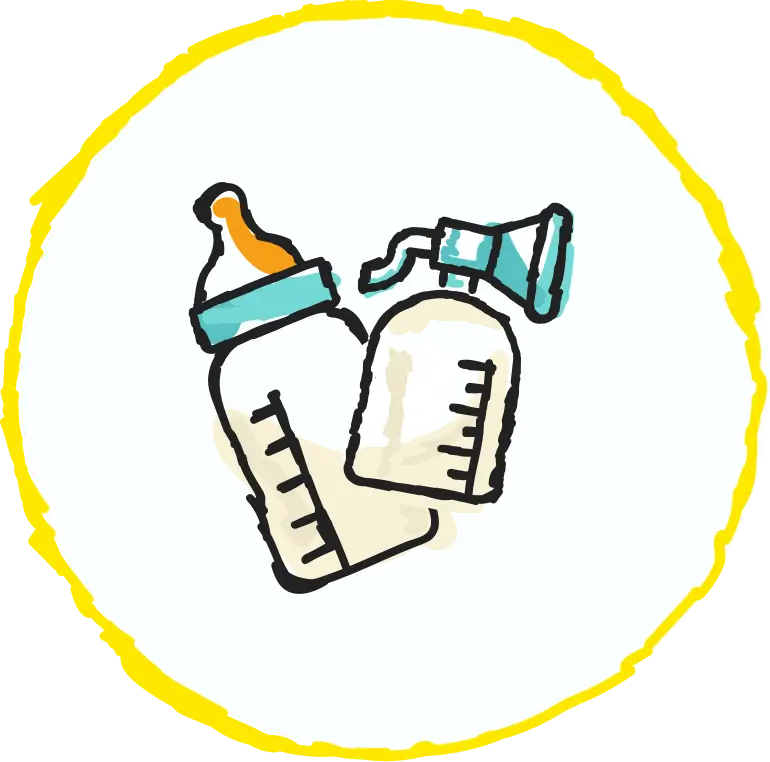
Birth to 6 Months
What’s baby’s first food?
Breast milk or formula is your baby’s first food. It’s all they need. At about 6 months though, your baby starts letting you know that he or she is ready for other kinds of foods.
What are signs that your baby is getting ready for solid foods? Always check with your child’s pediatrician before starting your baby on any solid foods.
- Your baby’s birth weight has doubled.
- Your baby is hungry a lot more of the time.
- Your baby can swallow better and drool less.
- Your baby can sit up while supported. Always make sure your child is sitting up while eating.
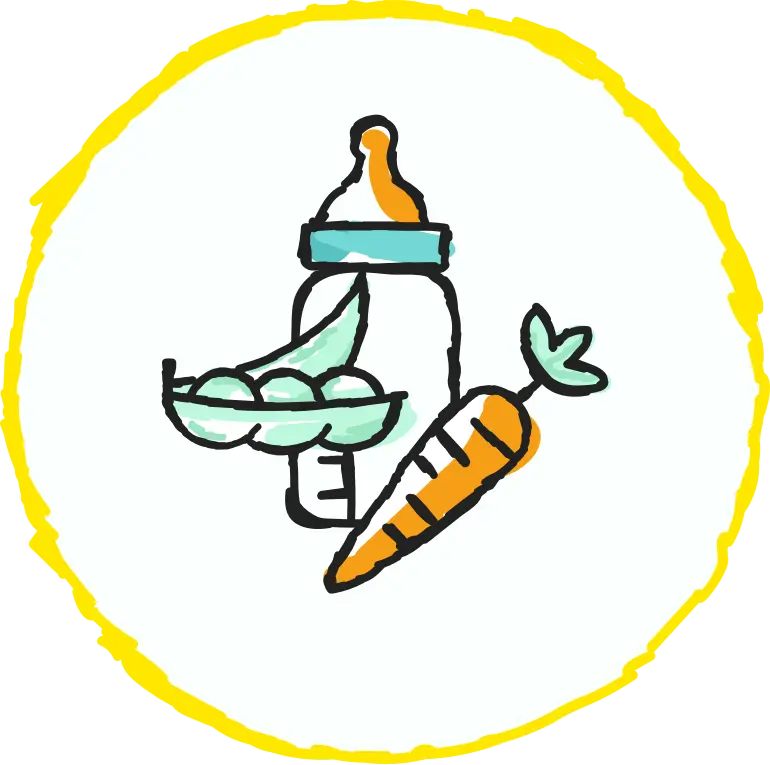
6 to 9 Months
Breast milk or formula is still one of your child’s most important foods. What should be your baby’s first solid food?
- Most medical experts suggest the best time to introduce solid foods is around 6 months old. Always check with your child’s pediatrician before starting your baby on any solid foods.
- Always make sure your child is sitting up while eating. For the child’s safety, be watchful while he or she eats solid foods.
- Examples of appropriate complementary foods:
- Iron fortified, single-grain infant cereal
- Mashed banana
- Cooked, mashed vegetables like carrots, peas or sweet potatoes
- Begin by introducing one new food at a time every several days offering a few spoonfuls each day, to monitor for food sensitivities, before moving on to a new food. Parents with food allergies should discuss concerns with their pediatrician.
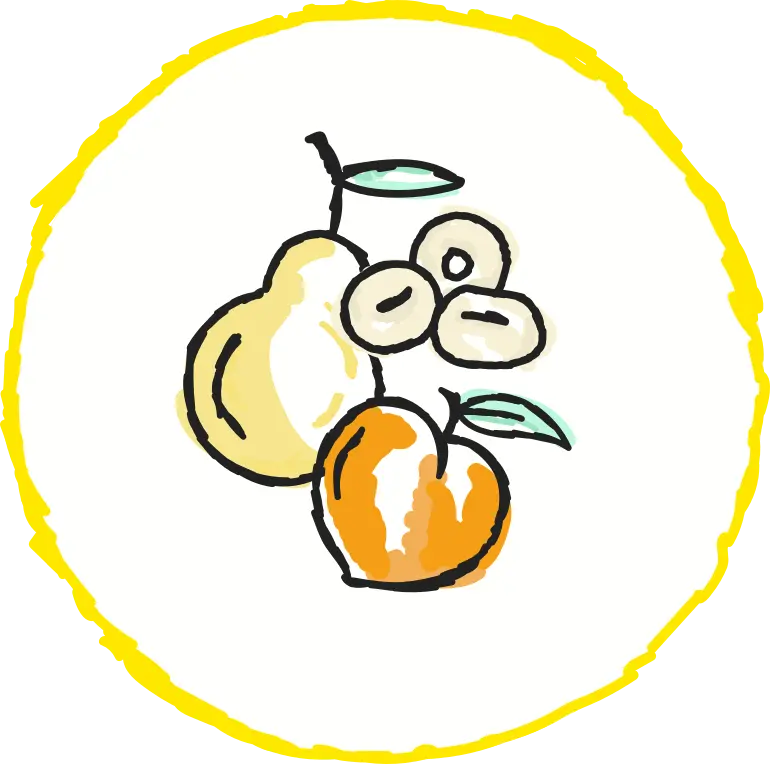
Around 9 Months
When can you introduce first finger foods (like Cheerios)? Look for these two signs:
- Your child has a lot of experience chewing (even though your child doesn’t have many teeth).
- Your child develops what’s called a “pincer grasp” and is able to pick up small objects between thumb and index finger.
Other appropriate foods to try:
- Sliced and quartered banana or diced pieces of other soft fruits like diced pears and peaches.
- A variety of cooked vegetables cut into small pieces, such as squash and green beans.
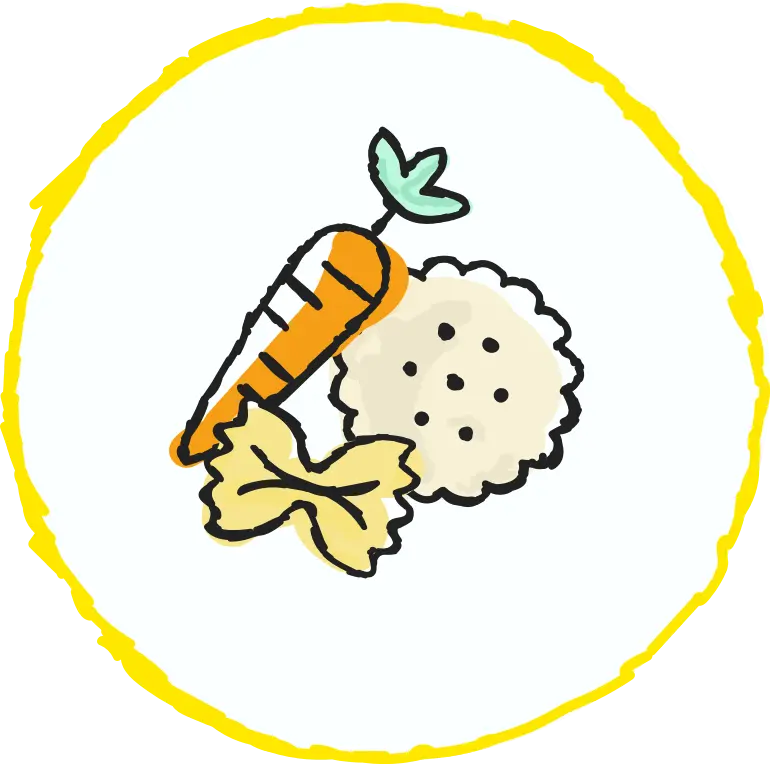
9 to 12 Months
Always make sure your child is sitting up while eating. For the child’s safety, be watchful while he or she eats solid foods.
What are good foods to try and foods to avoid? In general, “mushy” foods or foods that dissolve easily in your child’s mouth are best.
Try:
- Dry breakfast cereals (without nuts or chunks)
- Wafer-type crackers, bread, and soft tortillas (without nuts, seeds or chunks)
- Soft canned fruit, cut into small slices (peaches or pears)
- Soft cheese wedges or sticks, cut into bite-size pieces)
- Yogurt or cottage cheese
- Plain cubes or well-cooked vegetables (carrots or potatoes)
- Small, pea-sized pieces of cooked meat or poultry
- Well-cooked noodles
Avoid:
- Grapes, berries or raisins
- Nuts
- Potato chips or popcorn
- Corn
- Fruit that is under ripe, dried, unpeeled or in chunks
- Raw or uncooked vegetables
- Hot dogs or luncheon
- Peanut butter on a spoon
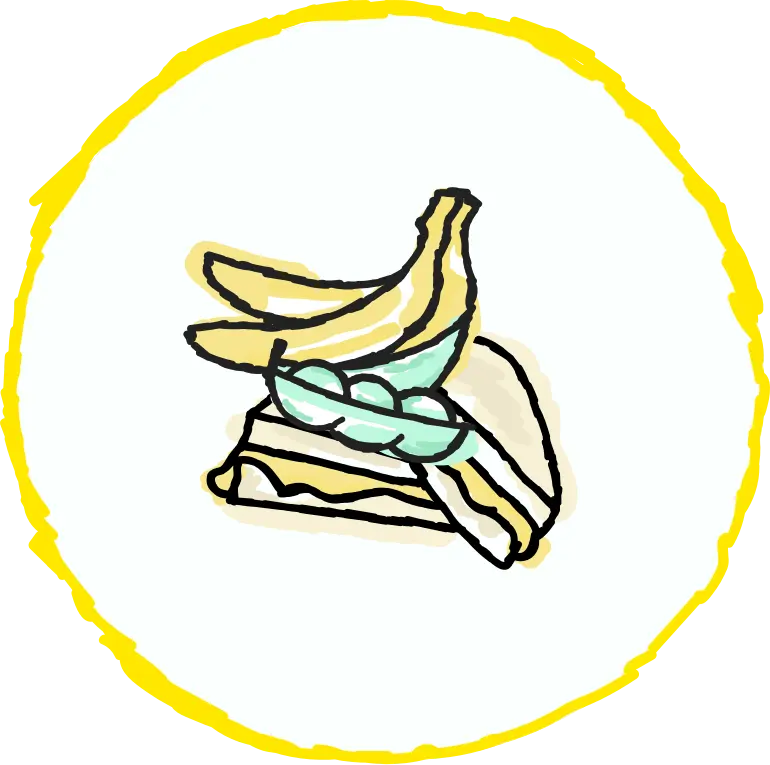
1 to 2 Years
To give your child a balance diet and safe foods, follow this sample menu plan.*
| Ingredient | Amount |
|---|---|
| Milk | 1/2 cup |
| Banana | 1/4 banana |
| Cheerios* cereal | 1/2 cup |
| Toast | 1/2 slice |
| Butter or margarine | 1 tsp. |
| Ingredient | Amount |
|---|---|
| Yogurt | 4 oz |
| Fruit | 1/2 piece |
| Ingredient | Amount |
|---|---|
| Milk | 1/2 cup |
| Grilled cheese sandwich | 1/2 sandwich |
| Carrots, cooked, diced | 2 Tbsp |
| Ingredient | Amount |
|---|---|
| Milk | 1/4 cup |
| Cheerios* cereal | 1/4 cup |
| Ingredient | Amount |
|---|---|
| Milk | 1/2 cup |
| Meat loaf | 2 oz |
| Rice | 2 to 3 Tbsp |
| Green peas | 2 Tbsp |
| Butter or margarine | 1 tsp. |
| Oranges, seedless, peeled and pulled into sections | 1/4 orange |
* The serving sizes listed may vary depending on your child’s growth and activity. If you have questions, ask your doctor.
